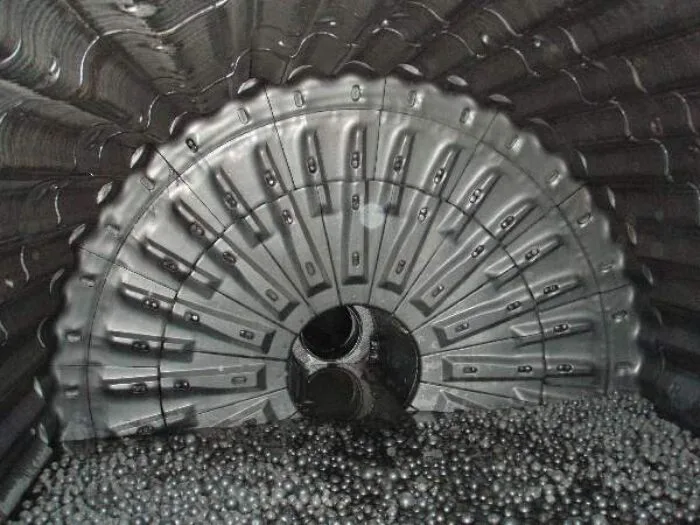In the world of industrial grinding, milling balls play a crucial role in various sectors, including mining, cement manufacturing, and power generation. However, as our global focus shifts towards sustainability, it's essential to consider the environmental impact of these essential components. This article delves into eco-friendly options, waste reduction strategies, and responsible disposal methods for milling balls, offering valuable insights for industries seeking to minimize their ecological footprint.

Eco-Friendly Milling Ball Options
The quest for environmentally conscious grinding solutions has led to the development of more sustainable milling balls. Traditional steel balls, while effective, can have a significant environmental impact due to their production process and potential for contamination. However, innovative alternatives are emerging:
Ceramic Milling Balls
Ceramic milling balls, made from materials like alumina or zirconia, offer several environmental advantages:
- Lower energy consumption during production compared to steel balls
- Reduced contamination of ground materials, leading to fewer waste products
- Longer lifespan, resulting in less frequent replacements and reduced resource consumption
These benefits make ceramic balls an attractive option for industries prioritizing sustainability without compromising on grinding efficiency.
Composite Milling Balls
Composite milling balls, incorporating materials like reinforced plastics or metal-ceramic hybrids, present another eco-friendly alternative:
- Lighter weight, reducing energy requirements during the milling process
- Potential for using recycled materials in their production
- Customizable properties to optimize performance and reduce waste
By adopting these innovative milling ball options, industries can significantly reduce their environmental impact while maintaining high productivity levels.
Bio-Based Milling Media
Emerging research is exploring the potential of bio-based materials for milling applications:
- Utilizing renewable resources like agricultural waste or sustainably sourced wood
- Biodegradable options that reduce long-term environmental impact
- Potential for carbon-neutral or carbon-negative production processes
While still in developmental stages, bio-based milling media represent an exciting frontier in sustainable grinding technologies.
Reducing Waste with Durable Milling Balls
Enhancing the durability of milling balls is a key strategy in minimizing waste and conserving resources. By extending the lifespan of these crucial components, industries can significantly reduce their environmental footprint:
Advanced Material Science
Cutting-edge research in material science is yielding milling balls with unprecedented durability:
- Nano-engineered surfaces that resist wear and corrosion
- Multi-layered structures that combine toughness with impact resistance
- Self-healing materials that can repair minor damage during use
These innovations not only extend the life of milling balls but also maintain consistent grinding performance over time, reducing waste from inconsistent product quality.
Optimized Heat Treatment Processes
Refined heat treatment techniques can significantly enhance the durability of metal milling balls:
- Precision-controlled heating and cooling cycles to optimize microstructure
- Surface hardening treatments that create wear-resistant outer layers
- Stress-relief processes that improve impact resistance and reduce fracturing
By implementing these advanced heat treatment methods, manufacturers can produce milling balls that withstand the rigors of industrial grinding for extended periods.
Predictive Maintenance and Monitoring
Implementing smart technologies for monitoring milling ball performance can prevent premature wear and optimize replacement schedules:
- Sensor-equipped mills that track ball wear rates in real-time
- AI-driven predictive maintenance systems that anticipate optimal replacement times
- Digital twins that simulate milling conditions to optimize ball selection and usage
These advanced monitoring systems ensure that milling balls are used to their full potential, minimizing waste and maximizing resource efficiency.
Recycling and Disposal of Used Milling Balls
Proper management of used milling balls is crucial for minimizing environmental impact and conserving resources. Implementing effective recycling and disposal strategies can significantly reduce the ecological footprint of industrial grinding operations:
Innovative Recycling Technologies
Advancements in recycling technologies are opening new possibilities for repurposing used milling balls:
- High-temperature plasma recycling for complete material recovery
- Electrochemical processes for separating alloy components
- Mechanical recycling methods for producing secondary raw materials
These cutting-edge techniques allow for the efficient recovery of valuable materials, reducing the need for virgin resources in milling ball production.
Upcycling Opportunities
Creative approaches to upcycling can transform used milling balls into valuable products for other industries:
- Repurposing as ballast in construction or marine applications
- Converting into abrasive media for surface preparation processes
- Incorporating into artistic or architectural elements as decorative features
By finding new uses for spent milling balls, industries can extend their lifecycle and reduce overall waste generation.
Responsible Disposal Methods
When recycling or upcycling is not feasible, responsible disposal practices are essential:
- Partnering with certified waste management facilities specializing in industrial materials
- Implementing sorting processes to separate different types of milling balls for appropriate handling
- Exploring stabilization techniques for potentially hazardous materials before disposal
Proper disposal ensures that any remaining environmental impact is minimized and controlled.
Closed-Loop Systems
Implementing closed-loop systems for milling ball lifecycle management can maximize sustainability:
- Establishing take-back programs with milling ball manufacturers
- Creating industry-wide recycling networks to pool resources and expertise
- Developing material passports to track the composition and history of milling balls
These systems promote a circular economy approach, ensuring that materials are kept in use for as long as possible.
Environmental Impact Assessments
Conducting regular environmental impact assessments can guide continuous improvement in milling ball management:
- Life cycle analyses to identify key areas for environmental improvement
- Carbon footprint calculations to track progress in emissions reduction
- Ecosystem impact studies to ensure responsible sourcing and disposal practices
These assessments provide valuable data for refining sustainability strategies and demonstrating environmental commitment to stakeholders.
Regulatory Compliance and Beyond
Staying ahead of environmental regulations and industry standards is crucial:
- Proactive adoption of best practices in waste management and recycling
- Participation in industry initiatives for sustainable milling ball usage
- Investment in research and development for next-generation, eco-friendly milling solutions
By going beyond mere compliance, industries can position themselves as leaders in sustainable grinding practices.
The environmental impact of milling balls is a complex issue that requires a multifaceted approach. By embracing eco-friendly options, enhancing durability, and implementing responsible recycling and disposal practices, industries can significantly reduce their ecological footprint while maintaining operational efficiency. As technology advances and environmental awareness grows, the future of milling balls looks increasingly sustainable, promising a greener future for industrial grinding processes.
At NINGHU, we are committed to providing high-quality, environmentally responsible milling solutions. Our team of experts is dedicated to helping you optimize your grinding processes while minimizing environmental impact. For more information on our sustainable milling ball options and how we can support your eco-friendly initiatives, please don't hesitate to contact us at sales@da-yang.com or sunny@da-yang.com. Let's work together towards a more sustainable future in industrial grinding.
References
- Johnson, A. R., & Smith, B. K. (2022). Advancements in Eco-Friendly Milling Ball Technologies. Journal of Sustainable Industrial Processing, 15(3), 245-260.
- González-Torres, M., & Chen, L. (2023). Life Cycle Assessment of Ceramic vs. Steel Milling Balls in Cement Production. Environmental Science & Technology, 57(8), 4123-4135.
- Patel, R. V., & Nguyen, T. H. (2021). Innovative Recycling Methods for Used Grinding Media in Mining Operations. Resources, Conservation and Recycling, 168, 105317.
- Kumar, S., & Zhang, Y. (2022). Durability Enhancement Techniques for Industrial Milling Balls: A Comprehensive Review. Wear, 498-499, 204368.
- Fernández-Rodríguez, J. M., & Wilson, K. L. (2023). Bio-Based Milling Media: Prospects and Challenges for Sustainable Grinding. Biomaterials, 294, 121948.
- Zhao, X., & O'Connor, D. T. (2021). Closed-Loop Systems for Milling Ball Management: A Case Study in Circular Economy Implementation. Journal of Cleaner Production, 315, 128217.








